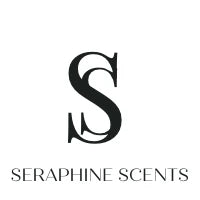
How to Read a Perfume Label — Ingredients, Concentration & More
Ever picked up a perfume bottle and felt overwhelmed by the fine print? You’re not alone. Whether you're browsing Seraphine Scents or testing samples in-store, understanding perfume labels is crucial to choosing the right scent for your lifestyle and personality. In this guide, we break down what perfume labels really mean and how you can use that knowledge to make better fragrance choices.
Why Understanding Perfume Labels Matters
Perfume isn’t just about smell—it’s about chemistry, concentration, and ingredients. Knowing how to read the label can help you:
- Identify how long a scent may last on your skin
- Understand the intensity of the fragrance
- Spot ingredients that align with your preferences or sensitivities
- Choose gifts with more confidence
Let’s decode the components you’ll commonly see on a fragrance bottle or box.
Fragrance Concentrations: EDP, EDT, EDC & More
One of the most important elements on a perfume label is its concentration level. This affects how long the fragrance lasts and how intense it smells. Here’s a breakdown:
- Parfum (Extrait de Parfum): 20–30% concentration — rich, long-lasting, luxurious.
- Eau de Parfum (EDP): 15–20% — the perfect balance between longevity and strength.
- Eau de Toilette (EDT): 5–15% — lighter and ideal for daily use or warm climates.
- Eau de Cologne (EDC): 2–5% — fresh and subtle, ideal for refreshing spritzes.
- Eau Fraîche: 1–3% — very light, often water-based, great for sensitive skin.
In humid climates like Singapore, many prefer EDPs for their lasting power. Check out our best-selling perfumes to explore top EDP options.
Ingredient Lists: What’s Inside the Bottle?
Labels usually list key components in descending order of quantity. Some ingredients to look out for include:
- Alcohol Denat: The main solvent in most perfumes, helps with evaporation and diffusion.
- Fragrance (Parfum): The proprietary blend of oils, typically a mix of natural and synthetic notes.
- Water (Aqua): Present in lighter fragrance formulations like body mists.
- Linalool, Limonene, Geraniol: Common aromatic compounds often flagged for allergens.
Don’t be alarmed by long chemical names—many are safe and essential to the fragrance structure. But if you have sensitive skin, knowing these ingredients can help guide your choice. Try exploring our under $50 collection to sample budget-friendly options first.
Fragrance Families & Label Cues
Though not always on the label, some perfumes will mention their fragrance family:
- Floral: Romantic and feminine (e.g., rose, jasmine)
- Woody: Warm and grounding (e.g., sandalwood, cedar)
- Oriental: Rich and exotic (e.g., vanilla, spices)
- Fresh: Clean and light (e.g., citrus, green leaves)
These families give you a quick sense of the scent's character. If you're unsure what suits you, browse our entire collection to explore various categories.
Batch Codes & Expiry Dates
Perfumes don’t have fixed expiry dates, but they do include batch codes—usually printed or stamped on the bottom of the bottle or box. These codes let you:
- Verify authenticity
- Check production dates
- Monitor shelf life (typically 3–5 years unopened)
Once opened, most perfumes retain optimal quality for 1–2 years, depending on how they are stored. Read our guide on how to store perfume correctly in Singapore’s climate.
Allergy Warnings & Regulatory Labels
Some bottles will include cautionary statements or icons for allergens, flammability, or cruelty-free status. In Singapore, perfumes must comply with international regulations under IFRA (International Fragrance Association) and may feature labels for:
- Allergen disclosure under cosmetic standards
- “Not tested on animals” labels
- Recyclability symbols for eco-conscious consumers
Country of Origin & Manufacturer Details
Most perfumes also include country of manufacture and distributor info. “Made in France” or “Made in Italy” often signals quality due to strict regulations. Still, always buy from trusted sources like Seraphine Scents to ensure authenticity.
Tips for Comparing Labels
Before you buy, compare labels for:
- Concentration type (EDP vs. EDT)
- Alcohol content (for sensitive skin)
- Batch code (for freshness)
- Ingredient allergens (for safety)
Doing so helps you make a confident, informed choice—especially when gifting or shopping online.
Final Thoughts: Labels Tell a Story
A perfume label isn’t just branding—it’s a story of what’s inside, where it came from, and how it’s best enjoyed. The more you understand, the better your buying decisions will be. For handpicked fragrances with detailed product insights, explore our best sellers or all perfumes.
Ready to test your knowledge? Browse our budget-friendly picks or shop the full range at Seraphine Scents—Singapore’s trusted perfume destination.

